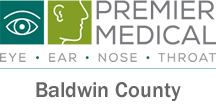What is LASIK Eye Surgery
If you are tired and frustrated with glasses and/or contact lenses, a surgical procedure called LASIK (Laser-Assisted In-Situ Keratomileusis) is an option to correct your vision.
This procedure is used to correct myopia (near-sightedness), hyperopia (far-sightedness), and astigmatism. An ophthalmologist (Eye MD) certified in use of an excimer laser reshapes the cornea – the clear dome at the front of the eye – such that light entering the eye is focus precisely on the retina, eliminated the need for corrective eye wear.
The procedure consists of first making a thin clear corneal flap which is folded back. The laser then alters the curvature of the underlying tissue. Finally, the corneal flap is folded back in place and allowed to heal.
The procedure is painless, as the eye is thoroughly anesthetized. After the procedure, most patients notice only minor irritation for a few hours. The visual recovery is very fast with LASIK such that many patients are 20/20 the very next day!
With any surgery there are potential side effects or complications. Fortunately, the complication LASIK is less than 1%. Some of the changes that can occur soon after LASIK are halos around lights (especially at night), dry eyes, redness, and light sensitivity. These are usually temporary or easily treatable.
Who is a Candidate for LASIK?
The key to successful LASIK surgery and a great visual outcome is careful patient selection. There are a number of factors that will influence whether a patient can have LASIK. These include patient age, patient expectation, corneal curvature, corneal thickness, and strength of glasses/contacts.
For those patients that are not LASIK candidates, they still may be candidates for other refractive procedures such as PRK, cataract surgery, or refractive lens exchange.
Dr. Turner performs meticulous and thorough testing to determine what procedure is right for the patient. This includes a full, dilated eye exam and advanced diagnostic testing.
What is the process for an evaluation and the surgery?
- Once the consultation appointment is made, you need to be out of contacts for at least 1 week prior to the appointment. While this may be inconvenient, it is essential for making sure that the measurements and treatment are accurate and successful. It is also necessary that you not wear contacts at least one week leading up to the surgery date. Dr. Turner is often able to schedule the surgery within 1-2 weeks from the evaluation.
- On the day of the procedure, a few additional tests are performed to ensure the most accurate outcome possible. Once Dr. Turner has personally reviewed the measurements and tests again, we will then proceed with the LASIK.
- The LASIK procedure takes approximately 7-10 minutes per eye. Many patients will notice their vision immediately improved, but certainly not perfect
- The remainder of the day, you will be expected to put a number of drops in the eyes to reduce the risk of infection or inflammation. There may be a mild amount of discomfort following the procedure; however, Dr. Turner encourages a nap to help the eyes heal.
- The next morning, most patient will notice a significant improvement in vision with many being 20/20. Dr. Turner expects to see all patients the next morning to confirm everything is perfect.
- You will be expected to continue the drops for the following week, and Dr. Turner will see you again around one week post-op from the procedure.
Cost of LASIK
The cost for CustomVue LASIK, which includes builit-in customization for your surgery, is $2,250 per eye. This price includes follow-up visits for one year following your procedure.
If you cannot or do not wish to pay in one lump sum, Premier Health provides the opportunity for LASIK patients to enter into a financing arrangement to allow you to pay over time.
Insurance doesn’t cover LASIK. In fact, most health insurance programs provide little in the way of coverage for vision problems, such as for contacts and solution.
Depending on the type you wear, contacts cost from about $100 to $400 a year. If you wear contacts, you obviously need to purchase solution. So add another $300 or so to your annual cost.
The bottom line: People who wear contacts spend about $400 to $700 a year on their vision, and will continue to do so as long as they wear contacts.
